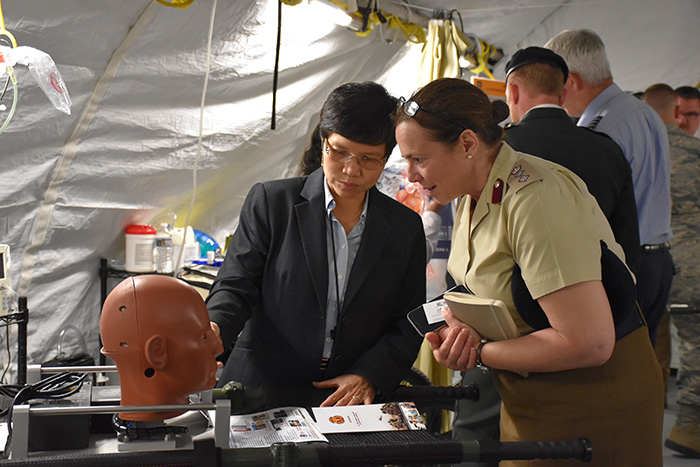USAMRMC Hosts NATO Chiefs of Military Medical Services

The U.S. Army Medical Research and Materiel Command hosted the Committee of the Chiefs of Military Medical Services in NATO for a visit June 1.
COMEDS, founded in 1994, is the NATO Alliance's senior military medical body on military health matters. It acts as the central point for the development and coordination of military health standards and for providing medical advice to the military committee.
Sixty-five COMEDS members, representing 26 different countries, participated in the visit, which was part of the 47th COMEDS plenary meeting in Washington, D.C., May 31-June 1.
"By supporting efforts such as the COMEDS, we are able to showcase work being done not only by the Army, but jointly among the services to create a better medically ready force for the future," said Julie Geare, USAMRMC International Affairs officer. "In doing so, we have the firsthand visibility of respected military leaders from around the world, helping better identify ways to collaborate together to ensure all forces can perform at the highest level of readiness."
Despite national variation in the delivery of healthcare, the identification and implementation of advancements in civilian healthcare is a global scientific activity. However, in addition to monitoring and employment of advances in medical civilian and military technologies, and research and evidence-based medicine, military medicine also requires the ability to deliver these skills and capabilities in the context of military operations.
The visit allowed the USAMRMC to share its efforts with the committee in order to improve coordination, standardization and interoperability in the medical field. Army, Navy and Air Force experts presented medical research and products to the Allies' Surgeons General and their staff during a tour of medical lanes set up at the Air Force Medical Evaluation Support Activity site.
The medical lanes included products and research displays from the USAMRMC, to include the U.S. Army Research Institute of Environmental Medicine's Performance Readiness Bar, the U.S. Army Aeromedical Research Laboratory's Facial and Ocular Countermeasure for Safety Headform and the Combat Casualty Care Research Program's Resuscitative Endovascular Balloon Occlusion of the Aorta.
"COMEDS is really just another way to spread our work, to spread our science," said Dr. Marcello Pilia, assistant portfolio manager of the Combat Casualty Care Research Programs Neurotrauma and Traumatic Brain Injury Portfolio. "The opportunity to take our collective efforts into all these different countries without even leaving the post is not only beneficial for us on a technical level, but also for our international partners as well."














